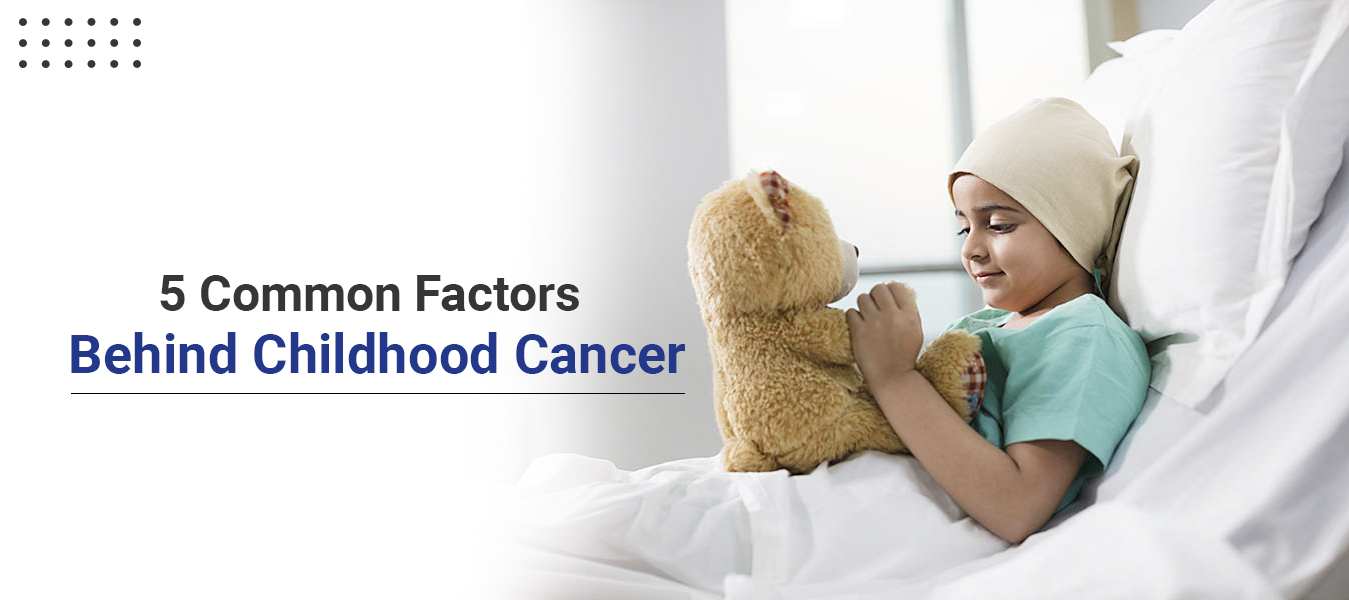5 common factors behind childhood cancer
What is Cancer?
Our body is made up of cells. Cells divide and form new cells in a controlled and organized way. When this process goes out of control and keeps on dividing, they form lump-like structures called tumors. A tumor can be malignant or benign. A benign tumor stays at a place and is noncancerous while a malignant tumor can spread to other tissues and is cancerous. There are over 200 types of cancers and their treatment and diagnosis differ from each other to a great extent.
According to the Indian Cancer Society, over the world, there are about 3 lakh incidences of cancer in children. In India, nearly 50,000 new cases of childhood cancer are reported every year. The most common types of cancer in children include leukemias, brain cancer, lymphomas, and solid tumors.
The best child doctor in Agra believes that childhood cancers are best treated at pediatric cancer units and are needed to take good care and timely diagnosis for proper treatment.
Risk factors of childhood cancer
Any factor that increases the odds of cancer in children can be called a risk factor. A risk factor does not mean that the child would definitely get cancer. The main reasons behind childhood cancers are not yet known. But some of the risk factors behind cancers in children can be discussed.
Medical Conditions
Certain health conditions increase the risk of cancer in children. Children having conditions like down syndrome are more likely to be affected by cancer than a normal child. For example, a child having down syndrome is 10 to 20 times more likely to have leukemia.
Genetics
A certain change in our DNA pattern can greatly influence changes in our bodies. DNA is present inside a cell and the reason why we look similar to our parents is also DNA. Even a minor change in DNA pattern can cause cells to grow uncontrollably and result in tumor formation. According to the World Health Organization, around 10% of children diagnosed with cancer were seen to be susceptible to it due to DNA imprints.
The problem in development in the womb
When a baby grows in the womb, some of the organs form at a very early stage. Sometimes when a cell that is supposed to mature and form a body part doesn't mature, they stay as they are. Usually, they gradually mature until the baby turns 3-4 years. Occasionally when the cell doesn't mature, they may grow uncontrollably to form a mass of cells called tumors which can be cancerous. Some of the childhood cancers like Wilm’s tumors and retinoblastomas develop when the child is still inside the mother's womb.
Exposure to infections
Some chronic infections like HIV, Epstein-Barr virus, and malaria are the risk factors for childhood cancer. These types of infections are particularly relevant in LMICs. Some other infections can increase the risk of developing cancer, so it is important to get vaccinated against hepatitis B to help prevent liver cancer and against human papillomavirus to help prevent cervical cancer. It is important to detect such conditions early for proper treatment.
Exposure to radiation
Most of the children with cancer are treated with radiotherapy. This radiation exposure may lead to the development of cancer in them in the future too. But this risk is lesser than not treating original cancer with radiotherapy.
These were some of the main reasons behind childhood cancer. There are many other environmental and physical factors that can lead to cancer in children. The best children hospital in Agra believes that with early diagnosis and proper treatment, cancer can be successfully treated.
https://www.cancerresearchuk.org/about-cancer/childrens-cancer/risks-causes
https://www.who.int/news-room/fact-sheets/detail/cancer-in-children
https://www.indiancancersociety.org/cancer-information/childhood-cancer.aspx



